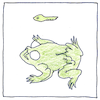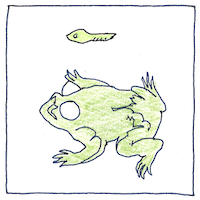Jan Swammerdam
entomology

|
Epigenesis
Jan Swammerdam studied their lives and found maggot and fly are phases of the same creature. Insects develop gradually from egg, to larva, to winged adult much the same as humans—from egg, to embryo, to infant, to a creature that can dissect an insect under a microscope to find the underdeveloped wings of the adult in the larva.
Genesis
The pattern of a tree is in its seed. The organs of an animal differentiate from pluripotent cells. Everything on Earth seems to develop from its beginning and to carry its beginning within itself. Only the beginning of the imagined beginnings are in doubt.
Ephemeri
Aristotle was either wrong or right about the number of legs of the mayfly, depending whether, for legs, he counted only the limbs the mayfly walks on. Jan Swammerdam wrote a book on the insect titled Ephemeri vita, and he became famous, posthumously, in the eighteenth century, but few today remember or care to know and fewer able and willing to read this work, considering that it is out of print and heavily laden with claims for the glory of God. God created many things that last only for a time but are just as worthy of being loved as anything we consider worthy.



In addition to studying insects, Jan Swammerdam studied muscle contraction and blood cells. As Galileo was the first to use the telescope in astronomy, Swammerdam was the first to use the microscope in dissections.
See also in The book of science:
Readings in wikipedia:
Other readings: